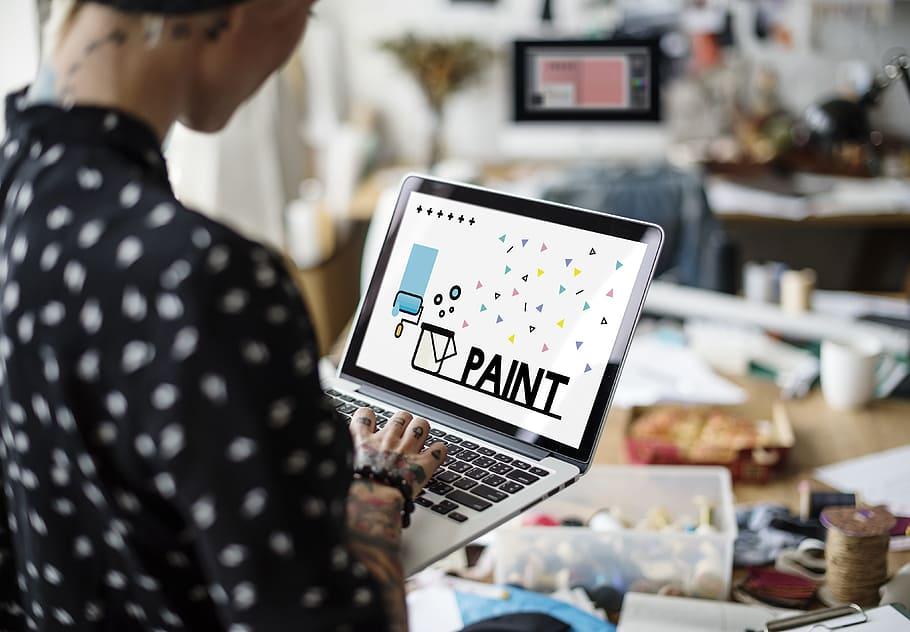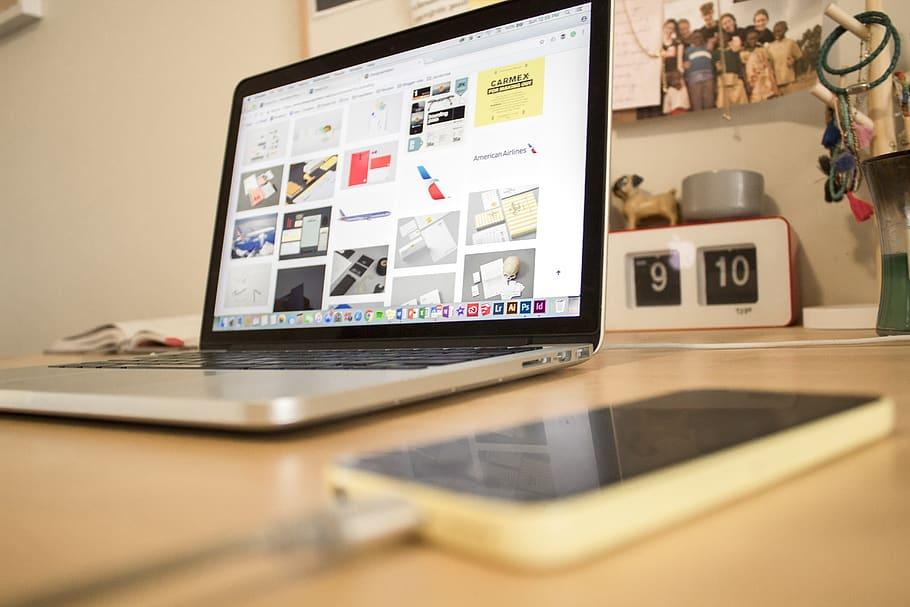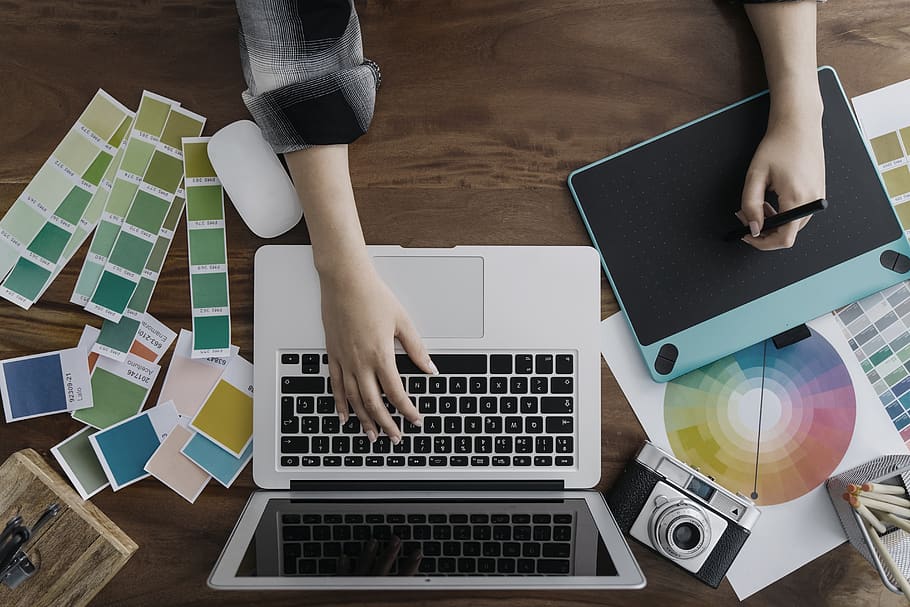I love telling stories from graphics, and that’s why I became a layout artist. If you have the same interest, then consider this career path, too.
It’s not easy to step into the world of design. So, before starting, let me show you how to become a layout artist. By following the six steps below, you will soon be my co-worker!
Who Is A Layout Artist?
A layout artist is responsible for the visuals of a project or publication. More specifically, they design and format texts, illustrations, and other visual elements in publishing, advertising, and marketing.
The ultimate goal of the layout artist is to establish a visually appealing layout so their product can easily attract viewer’s attention right from first sight. To do that, they use specialized design tools and layout programs. They also need to be good at art.
The layout artist often works with the supervisors and production team. Together, they brainstorm ideas and find the best solutions for their product.

What Does A Layout Artist Do?
Working with art is really fun. Let me tell you about my typical work day. Then, you can expect what you will do when working as a layout artist.
- I must have an idea in mind before starting the project. Thus, I meet with clients and stakeholders to learn their needs. Then, my team holds meetings to discuss the ideas.
- After discussions, I note some specifications for the product. If my clients agree, I will schedule the deliverables.
- Now, it’s time for the real work. I often use software to create conceptual designs. This task also involves arranging page elements and modifying graphics.
- I work with the publication team, too, to edit the layout.
- Finally, I examine proofs to identify and correct mistakes.
How To Become A Layout Artist
So, what do you think about the tasks above? If you like them, then you may want to become a layout artist.
The tasks sound simple, but trust me! I have to study many things and spend countless hours practicing to handle them. If you still want to pursue this career path, you must take these steps. Remember to put effort into everything you do.
1. Obtain a degree
The first step is to obtain an associate’s or bachelor’s degree. I took a bachelor’s degree in graphic design. It taught me design fundamentals and how to create graphic products. You can also consider this path. Alternatively, choose other relevant majors like architecture, art, and graphic communications.
If you plan to get an associate’s degree, you just need two years. During the program, you can learn how to work with CAD software. Geometric design is also part of the curriculum.
But if you intend to obtain a bachelor’s degree, you need more time. Each program lasts up to four years. And, of course, you can learn more things.
For example, in this program, you can dig deeply into architectural drawing and technical design using CAD. It will also help you build more skills.
I remember that when studying at university, I could even work with 2D and 3D designs. The best part was that I took assignments that were really similar to what I do now. Sounds great, right?

2. Get an apprenticeship
Once you’ve become familiar with the theories, put them into practice. I took apprenticeships, and they were helpful.
Why? First, they are jobs but with training. It means you can earn money while you are still learning.
Moreover, the hands-on experience you gain during your apprenticeship is valuable. You can work with seasoned professionals in the field. They can be your teachers, trainers, or even mentors.
Plus, in an apprenticeship, you can try real projects. After this period, you can prepare yourself for the pace of the industry. It’s not something I can tell you about. Instead, try to experience it yourself.
Another benefit of the apprenticeship is job opportunities. Many studios hire their apprentices because they don’t have to spend time training new staff. So, it’s an excellent chance to get your first full-time position.

3. Earn certifications
Your degree in graphic design is valuable. Yet, you should still earn certifications to develop more skills.
You can take most certifications online. They will teach you specific concepts on layout design. Then, you will become an outstanding candidate.
There are many options to choose from. But I highly recommend these ones:
Adobe Certified Expert
Adobe must be one of the most popular tools for layout artists. So why don’t you earn a certification for it?
Adobe Certified Expert demonstrates your proficiency in Adobe InDesign. It also implies that you understand the best practices for creating layouts using the software.
But before getting the certificate, you must pass an entry exam first. It has multiple-choice questions about design topics. You just need to get at least 80% correct answers.
CPLA
I have just got this certificate recently. It requires learners to have two years of experience or more. So, getting certified means the certificate holder is an experienced and skilled layout artist.
The certification involves many design concepts, including color theory, typography, and page layout. Once you pass the exam, you can get a certificate valid for up to three years.
CLT
If you are new to layout design, consider getting this certificate. It will give you the right skills and knowledge for your future career.
The course has a two-day workshop. You can learn about layout principles, measuring techniques, and many other things in two days. The workshop also offers hands-on training to use design tools properly.
4. Build a portfolio
The next step is to build a good portfolio. It’s the representation of your skills, style, and creativity. All of them are important for your job application.
With a strong portfolio, you will indeed feel more confident. Then, you can approach new projects with a positive attitude.
But here is a question: How can you make a good portfolio? Well, I wondered the same thing when applying for my first job. Here are my pieces of advice:
- First, only choose your best work, even when you have many things to show off. Remember, your potential employers don’t have time to focus on all your projects. So, just include the ones that demonstrate your skills the most.
- Next, arrange your work in a visually appealing way, but it should be logical, too. You can consider factors like style or chronological order. The goal is to ensure your portfolio is easy to follow.
- Then, for each project, include a short description. It can be about your role and relevant details. This way, the employers understand the purpose and concept of each design.
- Remember to make your portfolio diverse. I mean, your projects may come from your school assignments or the real ones you did during your apprenticeship.
- Design a professional portfolio for your layout. Remember you are applying for a layout artist job? Then you should at least show that you excel in what you will do.
The portfolio is ready now! You can attach it to your resume or cover letter. Upload it on your own website, too, and add your contact info to the portfolio. Some passers-by may like it and contact you for a job opportunity.

5. Improve skills
Next, develop your skill set and hone it every day. Here are the most essential skills to focus on:
Computer skills
As a layout artist, you will work on the computer almost every day. You have to use specialized computer programs for your design.
Aside from the design task, you need computer skills to collaborate with your colleagues. Everything is on the internet now. For example, whenever you finish a task, you must report to your boss and inform your teammates via email.
Creative skills
You work with art, and this sector requires high creativity. With creative skills, you can turn concepts into beautiful designs.
Creativity also helps you come up with new ideas for the project. Then, your products will stand out and catch the eye of viewers.
Typography skills
Typography skills refer to how well you can choose and arrange fronts. If you pull it off, you can easily guide the viewer’s eye through your design.
Plus, your typography choices convey emotions and even set the atmosphere of the design. So, develop typography skills so your future product can align with your client’s requirements in terms of style.
Attention to detail
You must pay attention to detail when designing. Each visual element should blend well in the layout. Otherwise, a tiny mistake will destroy what you have built for hours.
Communication
You will work with many people, such as clients, advertisers, and marketers. For example, you talk to your clients to understand their needs. Then, discuss with your colleagues how to execute the project. These tasks require good communication skills.

6. Apply for a layout artist job
Finally, apply for a layout artist job. If you have gained experience, it will be much easier to settle on an ideal position.
But do not expect to get the job immediately. It can be hard because of the high competition. I have some tips here to help you stand out:
- Read the job description carefully. Then, customize your resume and cover letter for each.
- Learn about your favorite company’s style and previous projects. This way, you can tailor your application to their needs and show interest in the role.
- Showcase your skills. If you can use any tools for the job, mention them, too.
- Attach your portfolio to the resume. Remember to keep it updated so your potential employers know your latest achievements.
- Follow the application guidelines carefully. For example, the company may ask you to name your email in a specific way or attach your certificates. So don’t miss any of them!
- If your future employers like your portfolio, they will invite you to a job interview. In this case, you should research some common questions for layout artists. Then, practice answering them.
- On your interview day, dress professionally and show up on time.
- During the interview, be confident and honest. If you lie to the interviewer, they can figure it out.
- Once you’ve got home, send a thank-you email to show gratitude for this chance. Even if you don’t get the job, you can leave a good impression.
Working Environment
Layout artists often work in the design team of a publishing company or a studio. They are often full-time employees and have their own working space in the office.
But it’s not the only choice. If you don’t like a nine-to-five job, you can work as a freelancer. It means you can join different projects and decide which one to run. Yet, you have to find your clients.
Salary and Job Outlook
Layout artists can earn around $55,002 per year. However, their salary may vary depending on their location.
For example, layout artists in Berkeley, CA, can make up to $68,212 per year. Meanwhile, those in Tacoma, WA, have an annual salary of $63,828.
Your experience and ability play a vital role, too. Companies don’t mind paying skilled layout artists higher. Thus, improve yourself day by day to get good pay.
Besides, the demand for layout artists and similar roles may grow in the next few years. Although the growth rate is slower than other jobs, you can still have many job opportunities.
Difference Between Layout Artist & Graphic Designer
Do not confuse layout artists with graphic designers, although some of their tasks overlap. Generally, layout artists make the overall design, and they set up scenes and pages (or layouts). Meanwhile, graphic designers are in charge of the design used in those layouts.
What Tools And Software Do 3D Layout Artists Use?
Layout artists need to use some tools at work to produce the best 3D artwork.
- 3D Studio Max
- Renderman
- Mental Ray
- Blender
- Blackmagic Fusion
- TVPaint
Final Thoughts
You can become a good layout artist after taking the six steps above. They seem like a lot, but don’t skip any! Otherwise, you will ruin all your hard work.
Every journey comes with challenges. So, although you will encounter obstacles when trying to be a layout artist, just follow your dream! With commitment, you will shine!
